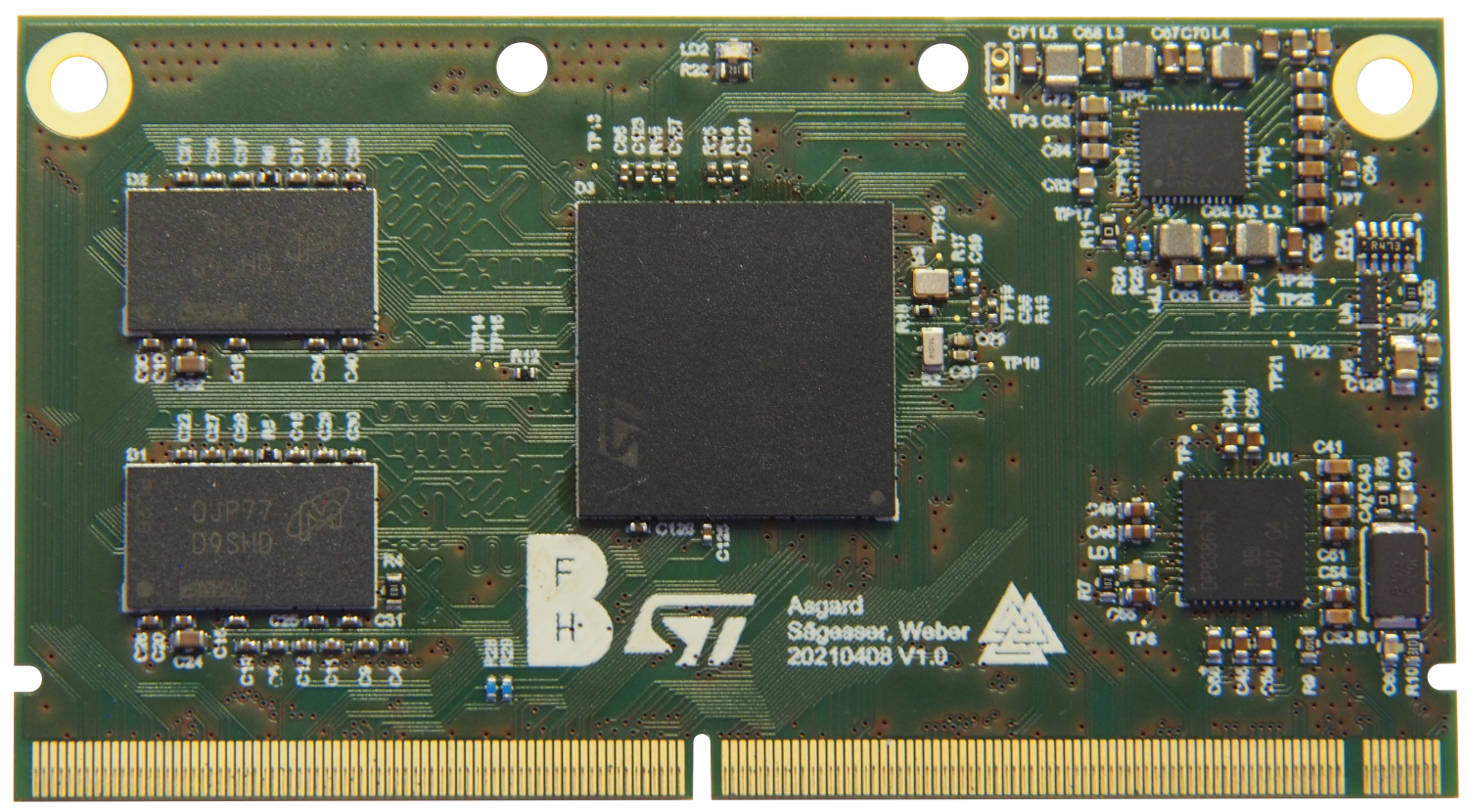Asgard¶

Datasheets
Asgard is a powerful SBC with a dual core ARM Cortex A7 + Cortex M4 STM32MP1 SoC, 1GB of DDR3 RAM and Gigabit Ethernet support. It’s capable of running Linux and Android as well as code with real-time requirements on it’s coprocessor.
Peripherals¶
MPU STM32MP157C¶
Core¶
- 32-bit dual-core Arm® Cortex®-A7
L1 32-Kbyte I / 32-Kbyte D for each core
256-Kbyte unified level 2 cache
Arm® NEON™ and Arm® TrustZone®
- 32-bit Arm® Cortex®-M4 with FPU/MPU
Up to 209 MHz (Up to 703 CoreMark®)
Memories¶
External DDR memory of 1 Gbyte DDR3/DDR3L-1066 16/32-bit
708 Kbytes of internal SRAM: 256 Kbytes of AXI SYSRAM + 384 Kbytes of AHB SRAM + 64 Kbytes of AHB SRAM in Backup domain and 4 Kbytes of SRAM in Backup domain
Dual mode Quad-SPI memory interface
Flexible external memory controller with up to 16-bit data bus: parallel interface to connect external ICs and SLC NAND memories with up to 8-bit ECC
Security/safety¶
Secure boot, TrustZone® peripherals, active tamper
Cortex®-M4 resources isolation
Graphics¶
- 3D GPU: Vivante® - OpenGL® ES 2.0
Up to 26 Mtriangle/s, 133 Mpixel/s
- LCD-TFT controller, up to 24-bit // RGB888
up to WXGA (1366 × 768) @60 fps or up to Full HD (1920 × 1080) @30 fps
Pixel clock up to 90 MHz
Two layers with programmable colour LUT
MIPI® DSI 2 data lanes up to 1 GHz each
General-purpose input/outputs¶
176 I/O ports with interrupt capability
Up to 8 secure I/Os
Up to 6 Wakeup, 3 tampers, 1 active tamper
PMIC STPMIC1A¶
Highly integrated power management IC for micro processor units
Input voltage range from 2.8 V to 5.5 V
4 adjustable general purpose LDOs
4 adjustable adaptive constant on-time (COT) buck SMPS converters
5.2 V / 1.1 A boost SMPS with bypass mode for 5 V input or battery input
I²C and digital IO control interface
Ethernet Phy DP83867IR¶
Robust, High Immunity 10/100/1000 Ethernet Physical Layer Transceiver
Ultra low RGMII latency TX < 90ns, RX < 290ns
Low power consumption 457 mW
16 programmable RGMII delay modes on RX/TX
Programmable MII/GMII/RGMII termination impedance
WoL (Wake-on-LAN) packet detection
Fully compatible to IEEE 802.3 10BASE-Te, 100BASE-TX, and 1000BASE-T Specification
DDR3L SDRAM MT41K256M16TW¶
DDR3L SDRAM (1.35V) is a low voltage version of the DDR3 (1.5V) SDRAM. Refer to DDR3 (1.5V) SDRAM (Die Rev :E) data sheet specifications when running in 1.5V compatible mode.
Differential bidirectional data strobe
8n-bit prefetch architecture
Differential clock inputs (CK, CK#)
8 internal banks
Nominal and dynamic on-die termination (ODT) for data, strobe, and mask signals
Programmable CAS (READ) latency (CL)
Programmable posted CAS additive latency (AL)
Programmable CAS (WRITE) latency (CWL)
Fixed burst length (BL) of 8 and burst chop (BC) of 4 (via the mode register set [MRS])
Selectable BC4 or BL8 on-the-fly (OTF)
Self refresh mode